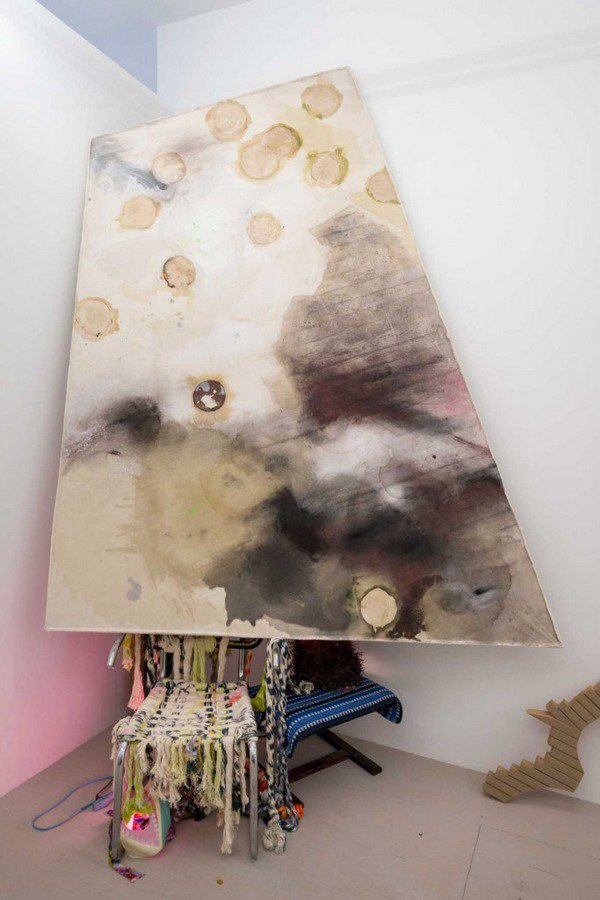23/11/2013
Lucy Dodd
David Lewis, New York
Cake 4 Catfish. Painting becomes earth; earth (cake-cliffs; the cliffs of cake) crumbles, over eons, softly, swooningly, like cake, into the sea.

In his great essay “The Falling Trapeze,” Yve-Alain Bois confesses to his astonishment upon first hearing
Jean Fautrier’s painting described as cake: “The lowbrow nickname startled me: as a Frenchman
who spent his youth in the (then) rarified atmosphere of Parisian museums and galleries, I had been
accustomed to hearing highfalutin and sanctimonious comments about Fautrier’s works—hardly
‘birthday cake.’”
Bois’s surprise, which he develops in the course of his thinking on Fautrier, is, however, part of a wider
pattern; this pattern emerges as one begins to consider the word, the concept, the sign /cake/ within
the marked (solar) discourse of painting. Wasn’t Barnett Newman, for example, publicly and vocally
horrified by Thiebaud’s cakes? It is not merely that one particular intellec- tual was once surprised and
affronted by /cake/, but, conversely, and more broadly, that /cake/ is, by definition, always a surprise,
always what one finds smeared, excessively, and in the wrong way, on one’s face.
Why then has there not yet been a theory of /cake/?
Is it that /cake/ splits painting in half, on the one hand pushing it down, driving it back into its origins
as colored earth (that is:/cake/ means: the destiny of painting is the body of painting, just as the destiny
of earth is, literally, the earth), while on the other, and conversely, insisting on painting’s inescapable
position as frothy, sugary excess, as permanent rococo, too eager to at- tract and be consumed?
If /cake/ is perhaps doubled—that is, wrong in two opposite ways—the exhibition, is, likewise, divided
in two sections, in both space and time: /show/ and /beyond/ /show/. The relationship between the two
sections is determined by a narrow crevice, the passageway between the The Doors... “One pill makes
you larger, and one pill makes you small...” In both sections, though, the destiny of /cake/ is given by the
figure of the catfish, or—allowing for a theoretical proposition to be expressed as a zoological allegory: /
cat/ /fish/—as well as the remembrance, in story, of the cliffs at Varkala beach, called Papanasam (the sin-destroyer, the watery completion—this too is in the exhibition—of the cycle of birth and death).
Painting
becomes earth; earth (cake-cliffs; the cliffs of cake) crumbles, over eons, softly, swooningly, like cake, into
the sea.
Note that at least three of the paintings, like the artist’s namesake, are, literally, blind(s).
“There is a tendency to look at large pictures from a distance. The large pictures in this exhibition are intended to be seen from a short
distance.”
—Barnett Newman
David Lewis
88 Eldridge St, Fifth floor New York, NY 10002
Hours:
Tuesday—Saturday 12—6pm or by appointment



